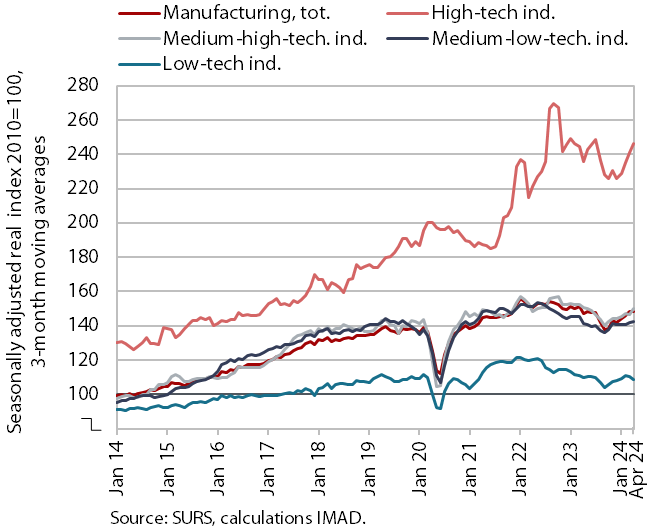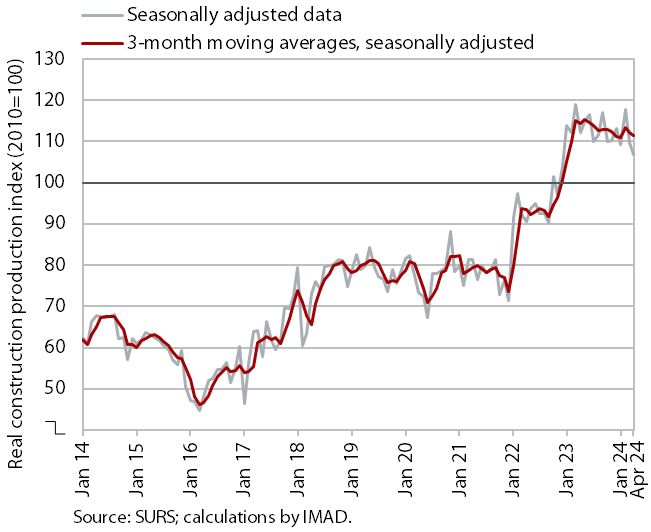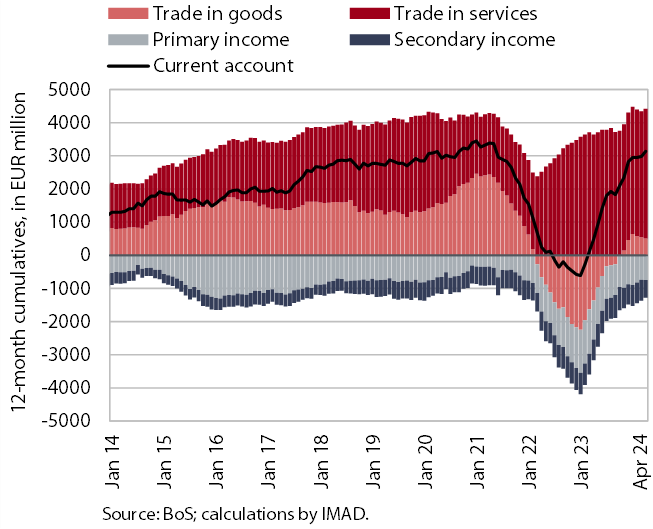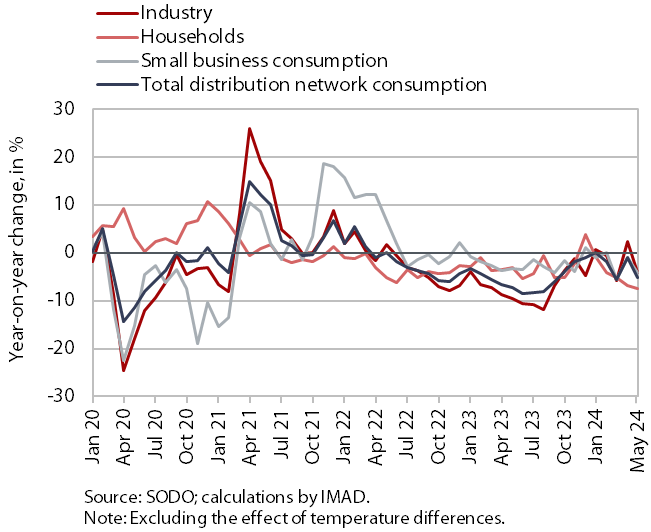Charts of the Week
Charts of the week from 10 to 14 June 2024: production volume in manufacturing, activity in construction, current account of the balance of payments and other charts
Manufacturing output increased in April, reaching a level close that of the first two months of the year, with activity picking up mainly in the more technology-intensive industries. Compared to the previous April, which had three fewer working days, output was 8.2% higher, while in the first four months it was similar to the same period last year (amid strong monthly fluctuations). After high growth at the beginning of last year, construction activity gradually declined amid monthly fluctuations. In the first four months, it was 3.2% lower year-on-year. Electricity consumption in the distribution network was lower year-on-year in May in all consumption groups. The current account surplus was higher in the last twelve months than in the previous 12-month period, primarily due to improvements in the balance of trade in goods.
Production volume in manufacturing, April 2024

Manufacturing output recovered in April after a significant decline in March and is now close to the level of the first two months of the year. Production recovered above all in the more technology-intensive industries, while production in the less technology-intensive industries in April was still below the level at the beginning of the year. Compared to the previous April, manufacturing output was 8.2% higher (with 3 more working days this April). In the first four months of the year, it was similar to the same period last year (with large monthly fluctuations). Production in the energy-intensive chemical industry and manufacture of other non-metallic mineral products n.e.c. and in some less technology-intensive industries remained down year-on-year. The production of machinery and equipment n.e.c. was also lower.
Activity in construction, April 2024

According to data on the value of construction work put in place, construction activity fell in April and was also down year-on-year. After high growth at the beginning of last year, activity gradually declined amid monthly fluctuations. In April, construction activity was 5% lower compared to the same month last year. The largest year-on-year decline in activity was recorded in civil engineering (by 8%). Activity also declined in construction of buildings and specialised construction activities.
Some other data, however, point to growth in construction activity. According to VAT data, the activity of construction companies in April was 4% higher than last year. When compared to the data on the value of construction put in place, this represents a notable difference of 9 p.p. in the growth of this activity.
Current account of the balance of payments, April 2024

The 12-month current account surplus increased compared to the previous 12-month period, reaching EUR 3.1 billion (4.7% of estimated GDP). This increase was mainly driven by the improved goods balance, as imports declined more sharply than exports. The surplus in trade in services widened, especially in trade in processing, transport, construction and financial services. Primary and secondary income also contributed to the improvement of the current account balance. The primary income deficit decreased due to lower net outflows of income from equity capital (dividends and profits) and higher net interest receipts by the Bank of Slovenia from deposits in foreign accounts. The secondary income deficit decreased due to higher private sector transfers (payments of non-life insurance premiums) and higher net positive transfers to the government sector from abroad (funds for current international cooperation from the EU budget).
Electricity consumption by consumption group, May 2024

Electricity consumption in the distribution network was lower year-on-year in May in all consumption groups. With the same number of working days, industrial consumption in May was 4.1% lower year-on-year, as was consumption by small business customers. As in recent months, household consumption was lower year-on-year in May (by 7.5%), which may also have been influenced by higher end prices for electricity due to higher network charges, changes in consumption billing (90:10) and higher VAT.
